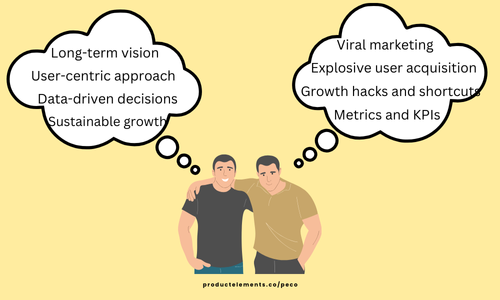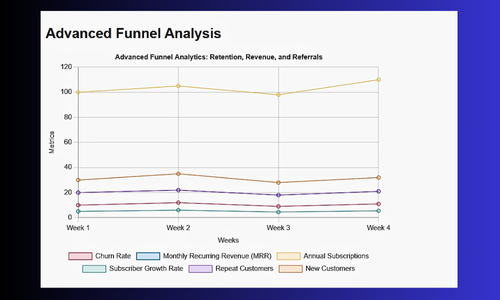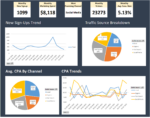Product Manager or Growth Hacker? The Modern Recipe for Product Success
The tech industry buzzes with the term “growth hacking,” promising explosive user acquisition and skyrocketing product growth. But for product managers (PMs), the reality is more nuanced. While growth hacking offers exciting possibilities and unconventional tactics, PMs hold the responsibility of ensuring these tactics align with the product’s long-term vision and, most importantly, user needs. This article dives into the world of growth hacking from a PM’s perspective, highlighting the importance of data-driven decisions, fostering collaboration with growth teams, and maintaining a relentless focus on user value.
Beyond the Hype: The PM’s Perspective on Growth Hacking
Growth hacking often conjures images of quirky marketing campaigns, viral stunts, and rapid experimentation. These elements are undeniably crucial for rapid growth, but PMs understand that sustainable and scalable growth hinges on a deeper understanding – user needs and achieving product-market fit. PMs are champions of building products users love, and growth hacking strategies should always complement this core objective.
Imagine this: a growth team proposes a bold marketing campaign to acquire a massive user base. While the potential for rapid user acquisition is enticing, a PM delves deeper. They ask critical questions:
- Who are these users? Do they align with our target audience and ideal customer profile (ICP)?
- What value will they find? Is the acquisition strategy attracting users who will have a positive experience and become long-term, engaged users?
- What are the long-term implications? Will this strategy negatively impact user experience or product quality?
By asking these questions and leveraging user data and market research, PMs ensure growth hacking initiatives aren’t short-term fixes but contribute to building a product with lasting value.
Data-Driven Decisions: The PM’s Guiding Light
PMs are data champions. They navigate the product development process using user data, market research, and analytics to inform critical decisions. This data-driven approach extends seamlessly to growth hacking. PMs work closely with growth teams to identify key metrics that align with the overall product goals. These metrics might include user acquisition cost (UAC), conversion rates at various stages of the user journey (e.g., sign-up to activation), customer lifetime value (CLTV), and churn rate. By tracking and analyzing these metrics over time, PMs can evaluate the effectiveness of growth hacking initiatives and ensure they’re driving real value for both the product and the business.
Here are some examples of how PMs leverage data alongside growth teams:
- A/B Testing Marketing Strategies: PMs collaborate with growth teams to design A/B tests for landing pages, marketing copy, or app store descriptions. By analyzing user behavior data from these tests, they can identify which approach resonates best with the target audience and drives higher conversion rates.
- Identifying User Acquisition Bottlenecks: User data can reveal friction points in the user acquisition funnel. PMs can work with growth teams to analyze where users are dropping off and implement strategies to address those bottlenecks, improving overall user acquisition efficiency.
- Segmenting User Data for Targeted Growth Initiatives: Data analysis allows PMs and growth teams to segment users based on demographics, behavior, or product usage patterns. This enables them to develop targeted growth initiatives that cater to specific user segments, maximizing the effectiveness of their efforts.
By utilizing data as a guiding light, PMs ensure that growth hacking efforts are not driven by guesswork or intuition, but by a clear understanding of user behavior and the impact of different strategies.

Collaboration is Key: Partnering with Growth Teams
Growth hacking thrives on a collaborative environment where different teams come together with their unique expertise. PMs play a vital role in bridging the gap between product development and growth hacking teams.
What PMs Bring to the Table:
- Product Vision and Roadmap: PMs possess a deep understanding of the product vision, roadmap, and long-term goals. They can contribute invaluable insights into the product’s future state and ensure growth hacking efforts align with this vision.
- User Insights and Behavior: Through user research, data analysis, and user feedback, PMs have a comprehensive understanding of user needs, pain points, and behavior within the product. This knowledge is essential for developing growth hacking strategies that resonate with users.
- Prioritizing User Experience: PMs are champions of user experience (UX). They can ensure that growth hacking initiatives don’t come at the expense of a positive user experience, which is crucial for long-term retention and user satisfaction.
What Growth Teams Bring to the Table:
- Experimentation Expertise: Growth teams are masters of experimentation. They can design and execute A/B tests, develop creative marketing campaigns, and leverage various marketing channels to acquire users.
- Data Analysis and Reporting: Growth teams have the expertise to analyze vast amounts of data related to user acquisition, engagement, and retention. They can provide PMs with actionable insights to inform decision-making.
Through open communication and collaboration, PMs and growth teams can create a synergy that fuels sustainable product growth. Regular meetings, data sharing, and brainstorming sessions can foster a shared understanding of user needs and product goals, leading to the development of effective and user-centric growth hacking initiatives.
-
Marketing and Acquisition Strategies: Growth teams possess extensive knowledge of different marketing channels and user acquisition strategies. They can explore innovative ways to reach target audiences and acquire new users.
Through open communication and collaboration, PMs and growth teams can create a synergy that fuels sustainable product growth. Regular meetings, data sharing, and brainstorming sessions can foster a shared understanding of user needs and product goals, leading to the development of effective and user-centric growth hacking initiatives.
User Value at the Core: Growth Hacking for the Long Haul
PMs recognize that successful products prioritize user value. Growth hacking tactics should not be a means to an end, but rather a tool to build a product that users find genuinely valuable and ultimately choose to stay with. Here’s where PM expertise shines. PMs can ensure growth hacking initiatives align with the product roadmap and development efforts. This ensures acquired users are not simply numbers, but rather individuals who become engaged, loyal customers.
Here are some key considerations for PMs when evaluating growth hacking tactics:
- Focus on User Onboarding: A well-designed onboarding process helps users understand the product’s value proposition and how it can benefit them. PMs can work with growth teams to create onboarding experiences that are smooth, personalized, and encourage users to activate and explore the product’s core features.
- Prioritize User Engagement: Growth hacking goes beyond just acquiring users; it’s about keeping them engaged. PMs can collaborate with growth teams to develop strategies that increase user engagement, such as in-app features, personalized recommendations, and loyalty programs.
- Build a Community: Fostering a strong user community can be a powerful growth hack. PMs can work with growth teams to create opportunities for user interaction, such as forums, social media groups, or in-app chat features. This sense of community can increase user engagement, retention, and brand loyalty.
By keeping user value at the core of their growth hacking strategy, PMs can ensure that acquired users become not just statistics but rather engaged advocates for the product.

Growth Hacking Tools for PMs
While there isn’t a single magic tool offering a complete growth hacking snapshot, PMs can leverage various options to get a quick and comprehensive understanding of the effectiveness of growth hacking initiatives across different dimensions:
- Growth Hacking Scorecards: Develop a scorecard that assigns a score to each crucial growth hacking dimension (e.g., user acquisition, user activation, retention) based on recent data. This scorecard provides a quick visual overview of performance across various aspects of growth hacking.
- Custom Dashboards: Utilize dashboards in analytics platforms like Google Analytics or Mixpanel to visualize key metrics for each dimension of growth hacking. For instance, a dashboard might display user acquisition cost by channel, conversion rates at different stages of the user journey, and churn rate.
- Automated Reports: Set up automated reports to receive summaries of crucial growth hacking metrics at regular intervals (daily, weekly, or monthly). This allows PMs to stay informed on the performance of growth hacking initiatives without manually generating reports each time.
- Collaboration Tools: Utilize project management or communication tools like Slack or Asana to facilitate collaboration with growth teams. This enables seamless information sharing, brainstorming sessions, and real-time discussions about growth hacking strategies and their impact.
By employing these tools and fostering a data-driven approach, PMs can gain a comprehensive picture of growth hacking efforts and ensure they contribute to the long-term success of the product.
Conclusion: Growth Hacking with a PM’s Perspective
Growth hacking, when approached strategically and with a focus on user value, can be a powerful tool for PMs to achieve sustainable product growth. By leveraging data, fostering collaboration with growth teams, and prioritizing user experience, PMs can ensure their growth hacking initiatives contribute to a product that users love and a thriving business. Remember, PMs play a vital role in guiding growth hacking efforts towards long-term product success, ensuring growth that is not just rapid, but also sustainable and user-centric.
In essence, the modern recipe for product success requires a blend of both PM and Growth Hacker skills. PMs bring the long-term vision, user focus, and data analysis, while Growth Hackers contribute with their experimentation expertise and marketing savvy. By working collaboratively and keeping user value at the heart of their efforts, this dynamic duo can create products that experience not just a growth spurt, but a flourishing and sustainable journey.
Standalone Growth Hacking Performance Tracking Tool – Free for Lifetime
Ready to transform scattered data into a growth hacking powerhouse? Look no further than the Standalone Growth Hacking Performance Tool, your free companion for unifying and analyzing data from all your critical sources!






